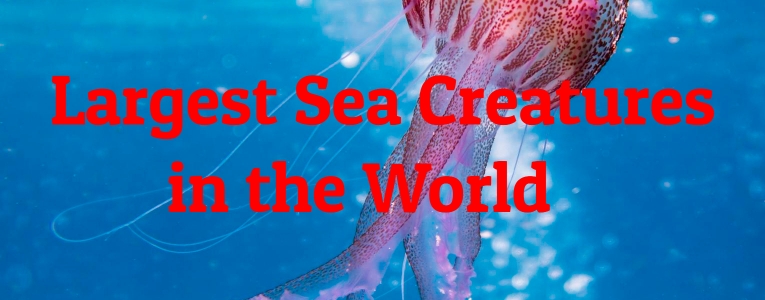There are plenty of large, fascinating animals in the world, but the ocean is home to behemoth creatures of a whole new level! Plenty of different aquatic species dwarf even the most massive creatures that you can find on land, reaching sizes so great that they’re nearly impossible to wrap your head around.
So, just how massive can the largest oceanic creatures get? Today we’ll learn about 10 of the largest sea creatures in the world and rank them according to size. We’ll also learn some fun facts about what makes each one unique!
-
Japanese Spider Crab
Genus: Macrocheira
Diet: Mollusks, Algae
Distinct Feature: Sharp claws
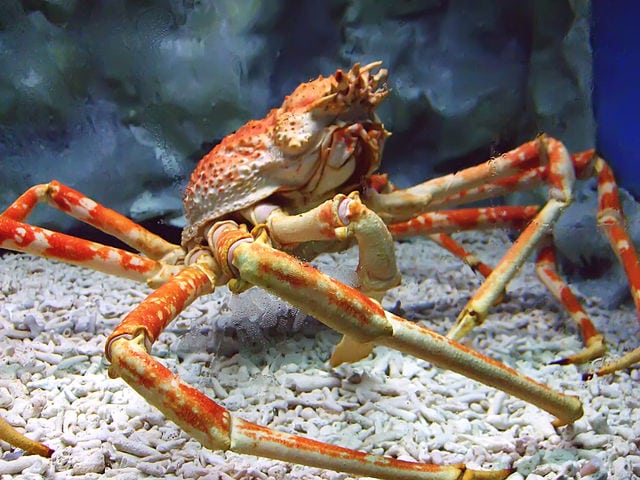 Source: wikimedia.org
Source: wikimedia.org
If normal spiders make your skin crawl, then you’d probably be best off avoiding the largest arthropod in the world: the Japanese Spider Crab! Especially large specimens can reach up to 42 pounds, and these crabs are often caught for eating since they yield so much meat. Japanese Spider Crabs are huge, but they aren’t immune to all predators–they use their tough exoskeletons alongside camouflage to keep themselves safe.
Did you know?
The American lobster is the only arthropod in the world with more mass than the Japanese Spider Crab.
-
Lion’s Mane Jellyfish
Genus: Cyanea
Diet: Crustaceans, Jellyfish
Distinct Feature: Thin, wispy tentacles
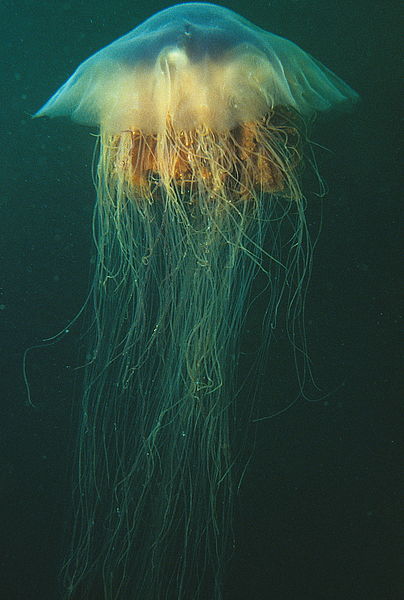 Source: wikimedia.org
Source: wikimedia.org
The majestic but dangerous Lion’s Mane Jellyfish lives predominantly in frigid northern waters such as those found in the Arctic Circle and certain parts of the Baltic Sea. This jellyfish’s bell, or top part, alone can reach up to eight feet in diameter! The tentacles are usually quite fine in proportion to its body, but can grow to be longer than many whales and shoot out highly venomous barbs to incapacitate its prey.
Did you know?
When these jellyfish drift into the Baltic Sea, they are unable to breed due to low salinity in the water.
-
Giant Oarfish
Genus: Regalecus
Diet: Plankton, Small Fish, and Squid
Distinct Feature: Long, narrow body
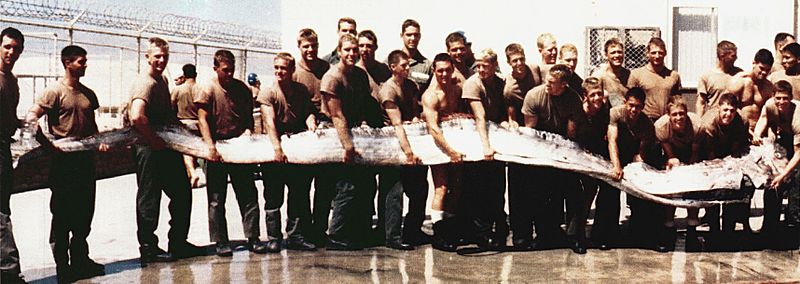 Source: wikimedia.org
Source: wikimedia.org
The Giant Oarfish is the longest bony fish in the world and is rarely encountered by humans since it keeps to deep sea waters. However, specimens sometimes do wash up on shore, giving people an opportunity to stand nearby for an impressive size comparison. These long, slender fish are often said to be the most likely source of old claims of sea serpent and sea monster sightings.
Did you know?
The Giant Oarfish’s dorsal fin stretches along the entire length of its body.
-
Great White Shark
Genus: Carcharodon
Diet: Fish, Squid, Seals
Distinct Feature: White underbelly
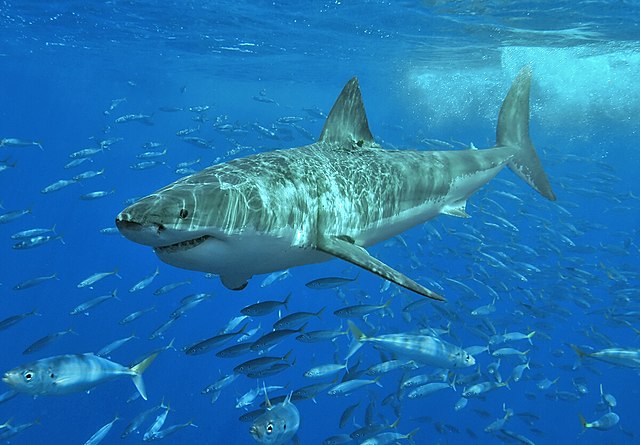 Source: wikimedia.org
Source: wikimedia.org
The Great White Shark is the largest predatory shark in the world, and was made famous for its aggression by the movie JAWS. These sharks are quite social, usually traveling and hunting in groups. Interestingly, Great White Sharks avoid fighting with each other since they have such a strong ability to disable and severely damage one another: They tend to resolve conflicts with displays of aggression and power instead of fighting directly.
Did you know?
The Great White Shark’s only known predator is the occasional Orca, and even threats from Orcas are rare.
-
Giant Manta Ray
Genus: Mobula
Diet: Plankton
Distinct Feature: Wide, flat body and fins
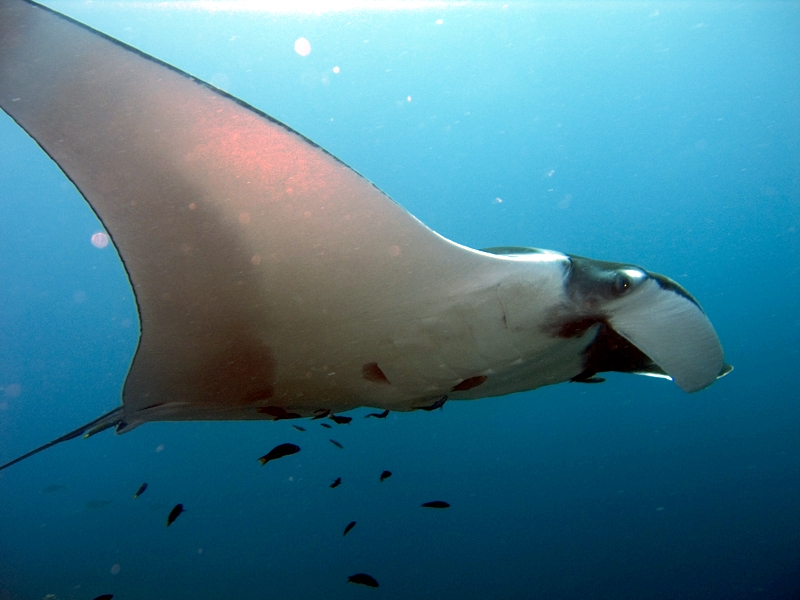 Source: wikimedia.org
Source: wikimedia.org
The incredible Giant Manta Ray is the largest ray in the world, with a “wingspan” of up to 29 feet. They are technically carnivores, but their diets are restricted to zooplankton which they filter from the water while they swim. Their gills are located on the bottom of their disc-shaped bodies, and they move their fins much like flapping wings to move through the temperate waters where they reside.
Did you know?
-
Orca
Genus: Orcinus
Diet: Seals, sharks
Distinct Feature: Bold black and white markings
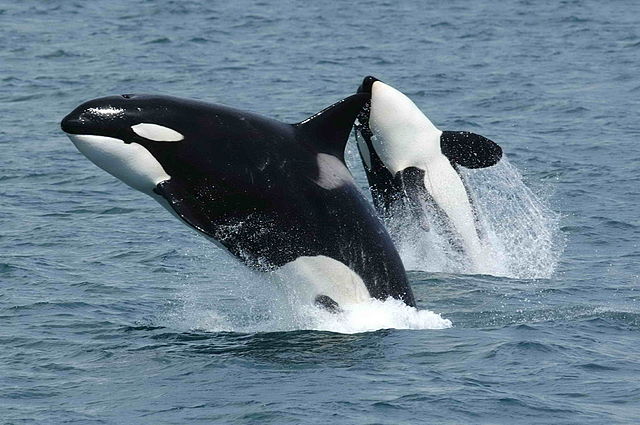 Source: wikimedia.org
Source: wikimedia.org
Orcas, the largest members of the dolphin family, are also often known as “Killer Whales” due to their status as apex predators. Orcas will hunt and eat just about any creature within reach, including other whales. They are also known for being the most widespread mammal on earth other than humans, sustaining in various types of ocean waters all over the globe.
Did you know?
Orcas live in two types of groups, called pods, consisting of up to 40 members. Resident pods are gentler, while Transient pods are more aggressive and behave similarly to wolf packs.
-
Whale Shark
Genus: Rhincodon
Diet: Plankton
Distinct Feature: Wide, blunt head and mouth
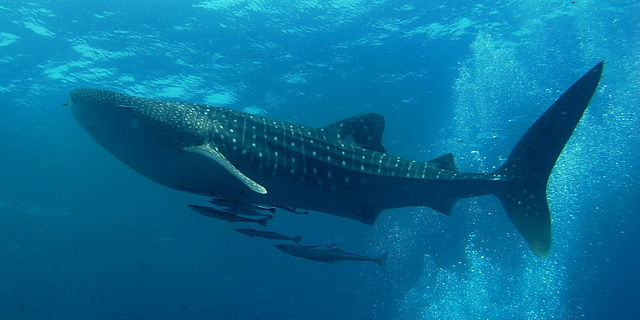 Source: wikimedia.org
Source: wikimedia.org
The largest shark in the world is actually a filter feeder, only eating zooplankton and whatever small fish get caught in their gaping mouths while they swim. These majestic creatures can live anywhere from 70 to approximately 130 years and each individual shark has its own unique pattern of brown spots. Whale sharks live mostly solitary lives, but will share feeding grounds in peace.
Did you know?
Aside from the whale shark, the megamouth shark and basking shark are the only other two filter-feeding sharks in the world.
-
Sperm Whale
Genus: Physeter
Diet: Giant Squid, Sharks
Distinct Feature: Blunt snout
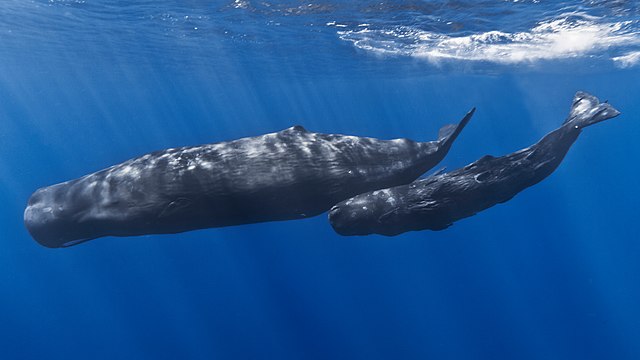 Source: wikimedia.org
Source: wikimedia.org
This massive, predatory whale feeds on everything from basking sharks and squid to rays and octopi. The Sperm Whale is also known for inspiring the “white whale” of the famous story Moby Dick. This whale is the largest toothed whale and the largest toothed predator in the world, and one of only three currently-living species in the sperm whale family.
Did you know?
Sperm oil, or Spermaceti, was commonly sought after in the whaling industry and led to excessive hunting of the sperm whale, leading it to be protected by the International Whaling Commission.
-
Fin Whale
Genus: Balaenoptera
Diet: Plankton
Distinct Feature: Long, slender body with a distinct ridge
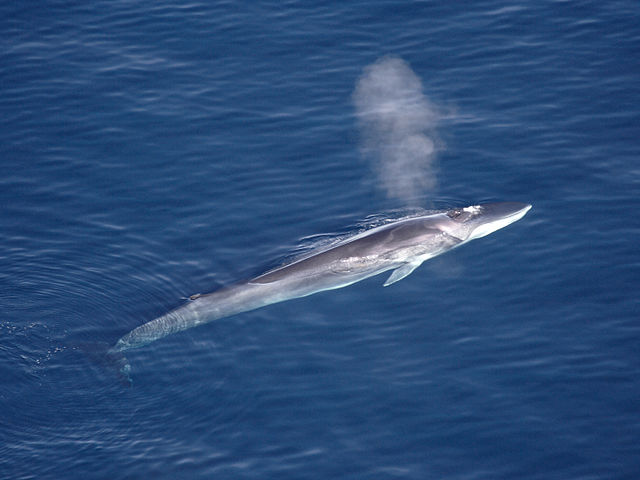 Source: wikimedia.org
Source: wikimedia.org
This colossal baleen whale belongs to the infraorder “Cetacea,” which includes porpoises and dolphins alongside whales. A noticeable ridge runs along the fin whale’s back, resulting in it being nicknamed the razorback. Another fascinating and unique feature of this whale is that its lower jaw is black on the left side and stark white on the right.
Did you know?
Sadly, the fin whale is now endangered after being hunted alongside many other whale species during the peak of the whaling era during the 20th century.
-
Blue Whale
Genus: Balaenoptera
Diet: Krill
Distinct Feature: Ridged throat
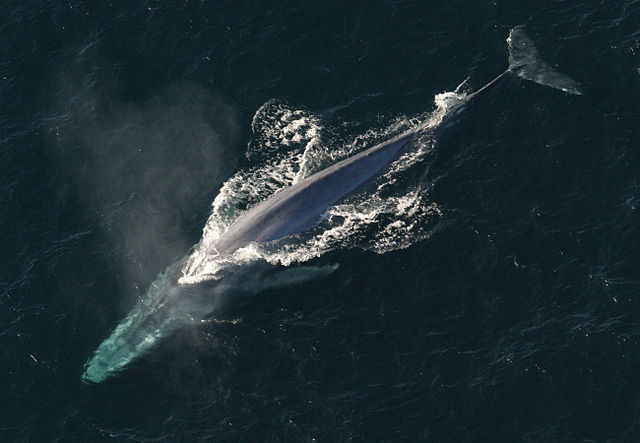 Source: wikimedia.org
Source: wikimedia.org
The Blue Whale is the largest sea creature in the world. It is actually divided into five different separately-recognized subspecies, all of which were reduced to distressingly low numbers as a result of whale hunting. The blue whale holds a special status as the largest mammal ever to have lived, and its heart alone weighs around 1,500 pounds! It shares the baleen whale suborder Mysticeti with gray whales and white whales.
Did you know?
Female blue whales are usually noticeably larger than males.
